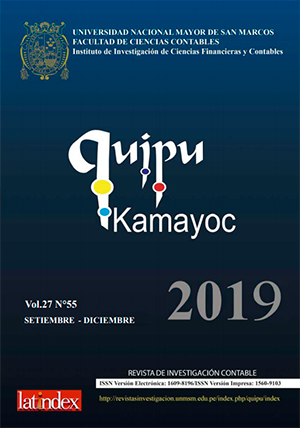The legitimate defense in the face of Unconstitutionality of the precautionary tax lien and its auction
DOI:
https://doi.org/10.15381/quipu.v27i55.17044Keywords:
Property auction, precautionary attachment, bank accounts, legitimate defense.Abstract
One of the most important issues within Mexican Tax Law is the auction of assets that is established in article 155 section I of the Federal Tax Code, within the precautionary attachment. Under that premise, there is an immense gap when bank accounts of taxpayers are blocked and are not susceptible to auction, so it cannot be justified that the Mexican authority does not carry out due process which is established by articles 1, 14 . ° and 16. ° of the Mexican Constitution. This investigation consists in making a comparison between the tax laws of Mexico and Peru related to the legitimate defense against the unconstitutionality of the precautionary tax embargo and its auction. On the one hand, it is evaluated how the tax laws are applied and their due process in the matter of the precautionary attachment in Mexican territory to taxpayers for breach of their tax liabilities. On the other hand, it is pointed out that the Tax Code of the Republic of Peru indicates the ways of seizing or locking the coercive executor, and that everyone has the right to secrecy, the inviolability of their private documents and a legitimate defense. It is concluded that in the Republic of Peru the right to the guarantee of hearing, due process, at the beginning of the right to possession and property is respected, which is not contemplated in the Fiscal Code of the Federation of the Mexican State.
Downloads
Downloads
Published
Issue
Section
License
Copyright (c) 2019 Horacio Puentes Medina, Marcela Rocha López

This work is licensed under a Creative Commons Attribution-NonCommercial-ShareAlike 4.0 International License.
AUTHORS RETAIN THEIR RIGHTS:
a. Authors retain their trade mark rights and patent, and also on any process or procedure described in the article.
b. Authors retain their right to share, copy, distribute, perform and publicly communicate their article (eg, to place their article in an institutional repository or publish it in a book), with an acknowledgment of its initial publication in Quipukamayoc .
c. Authors retain theirs right to make a subsequent publication of their work, to use the article or any part thereof (eg a compilation of his papers, lecture notes, thesis, or a book), always indicating the source of publication (the originator of the work, journal, volume, number and date).






